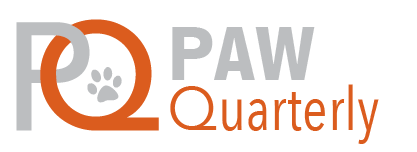DISTRACTED TO DEPENDABLE
Building Trust and Responsiveness in Your Dog

Imagine your dog darting toward a busy road, chasing a squirrel, or wandering off to explore. A reliable recall can prevent accidents and keep your pup safe. Recall is one of the most important skills you can teach your dog for their safety and your peace of mind.
The joy of seeing your dog come running with excitement when using a recall command builds trust and strengthens your bond.
SET YOUR DOG UP FOR SUCCESS
When training a recall the first thing you need to do is start building positive associations and create handler value. Training the recall in a fun and energetic way with high-value rewards will make the behaviour of coming when called valuable and exciting for your dog.
CHOOSE A CUE, START SMALL AND REWARD BIG
Use a word like Come! or Here!, or a noise prompt like a whistle or clapping your hands to get their attention that is distinct, clear and consistent. Start practicing in a low-distraction familiar environment, like your living room or backyard. Use high-value treats, toys, or praise to reward your dog when they respond to the recall cue. Make returning to you the best thing they could ever do. Make it a big party with a ton of enthusiasm and excitement.
TRAINING THE BEHAVIOUR ON THE MOVE
Outside of the home, set the stage by beginning in a quiet area with your dog on a leash or a long line. Call their name to get their attention, then use your recall cue. The moment they come to you, reward them generously and with a lot of excitement. How you respond matters to your dog. Reward your dog with treats, play, praise and enthusiasm and keep the party going. This will show your dog that the fun doesn’t end by coming back to you.
Make it easy by practicing at short distances to learn the behaviour while keeping distractions minimal. When the behaviour becomes reliable, slowly increase the distance. If adding distance is hard for your dog, go back to a shorter distance where they were successful and only increase the distance again when the behaviour is reliable and consistent.
When your dog responds reliably in a controlled environment, you can add distractions like toys, people, or other dogs.
Generalization is important. Practice recalls in different locations regularly so your dog knows the behaviour applies everywhere, not just at home or in a training facility.
COMMON ISSUES
Ignoring the Recall: Avoid repeating the cue multiple times. Instead, make yourself exciting by clapping, running in the opposite direction to trigger your dog to chase you, or crouching down to make yourself more inviting.
Hesitation: Step up the treat game! If your dog hesitates, consider whether your rewards are enticing enough. The higher the distractions, the higher the value the reward needs to be.
Distractions are too high: If your dog is struggling, reduce distractions and build them back up gradually.
A reliable recall is a life-saving skill that will keep your dog happy and safe. With patience, consistency, and enthusiasm, you will create a bond of trust that ensures your dog always comes running—no matter what.
The higher the distractions, the higher the value the reward needs to be.
PRO TIPS
- NEVER PUNISH YOUR DOG FOR RETURNING
Even if they have misbehaved, always greet them with positivity when they come back. Punishing them for returning will discourage future recalls. - PRACTICE REGULARLY
Consistent practice helps maintain the behaviour over time. - USE A LONG LINE
For safety during off-leash training, use a long line to give your dog freedom while staying in control.

